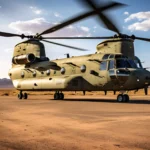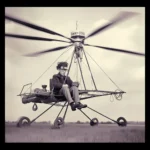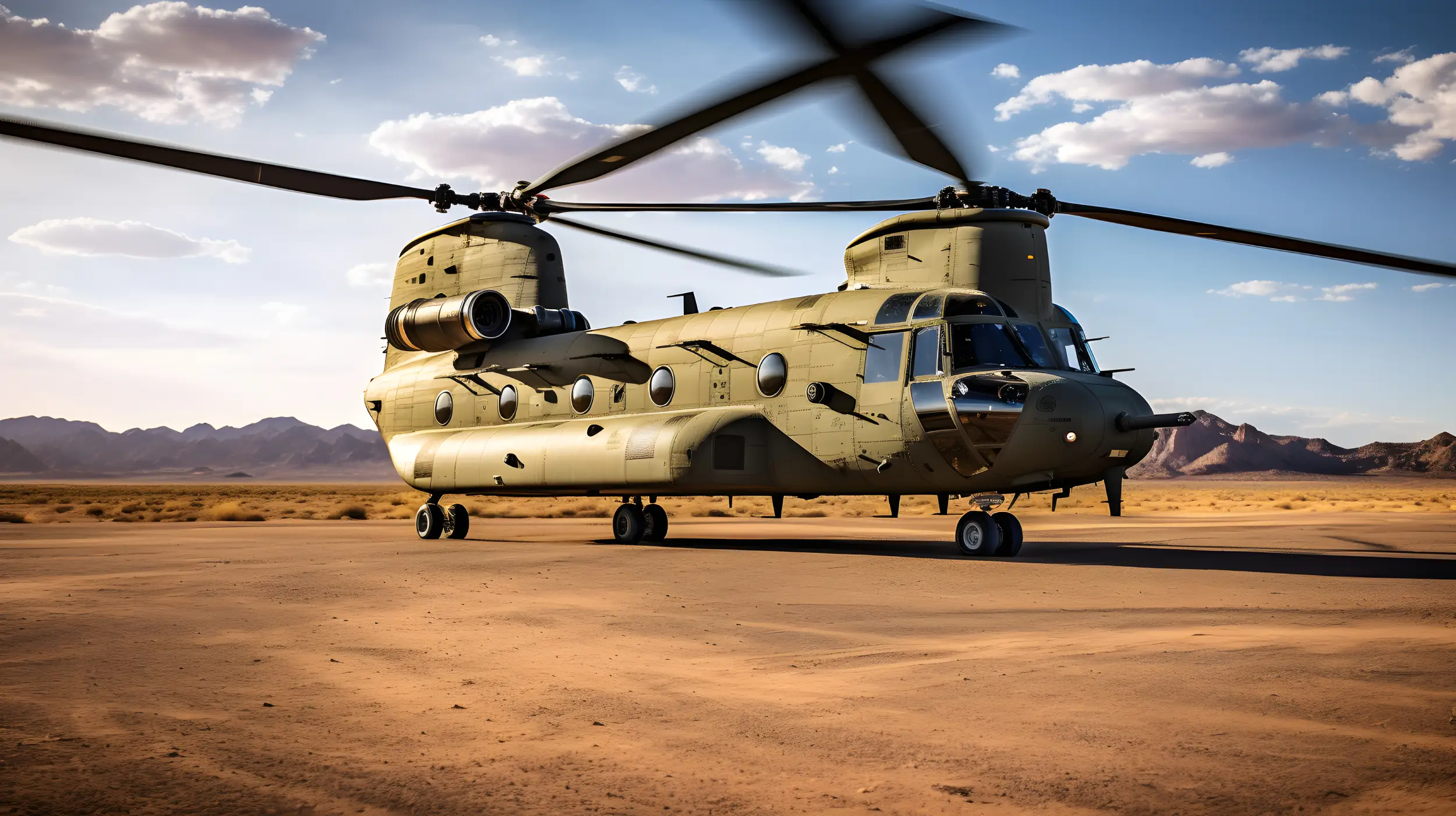When discussing the heavy-lift champions of the helicopter world, it is impossible not to mention the iconic Boeing CH-47 Chinook. Renowned for its distinctive tandem rotor configuration and extraordinary lift capacity, the Chinook is a testament to aviation engineering prowess and has indelibly shaped the landscape of vertical lift aircraft since its inception.
The Chinook first took to the skies in 1962, and its presence has been instrumental in shaping military and humanitarian operations worldwide. From Afghanistan’s hot, dusty landscapes to the storm-battered coastlines during Hurricane Katrina, the Chinook has proven its mettle in some of the most demanding environments on Earth.
The standout feature of the Chinook is its impressive carrying capacity. It can transport up to 55 troops or more than 24,000 pounds of cargo, making it an indispensable tool for logistics and transportation. The rear-loading ramp offers easy ingress and egress for personnel, vehicles, and other large shipments, while the three external ventral cargo hooks allow for external load operations.
Powered by two Honeywell T55-GA-714A turboshaft engines, the Chinook boasts a maximum speed of 196 mph (170 knots), making it one of the fastest helicopters in the American inventory. Its powerful engines and unique rotor design allow the Chinook to perform operations that would be otherwise impossible for traditional helicopters.
The tandem rotor configuration offers several advantages. Firstly, it eliminates the need for an anti-torque tail rotor, enabling the transmission of all power to the lift-producing rotors. This design allows the Chinook to carry loads nearly equal its empty weight. Moreover, the tandem rotor design enhances stability during hover and lift operations, which is particularly valuable during cargo sling operations.
The CH-47 Chinook’s avionics suite is as sophisticated as you would expect. The digital flight control system makes for responsive handling, while the advanced cargo handling systems ensure accurate deployment of supplies and personnel. Enhanced navigation systems and advanced communication suites keep the Chinook connected, providing real-time data and communication on and off the battlefield.
The Chinook’s longevity and adaptability are evident through its many variants, including models for medical evacuation, aircraft recovery, parachute drop, and special operations. It has evolved continually to meet the changing demands of modern warfare and humanitarian assistance, incorporating technological advancements to enhance its operational capabilities.
Despite its size, the Chinook is no slouch regarding survival and defense. Equipped with advanced threat detection systems and countermeasures, the Chinook can navigate hostile environments, ensuring that its precious human or material cargo gets to where it needs to be safe.
The Boeing CH-47 Chinook remains an icon of aerial logistics, a powerhouse of a helicopter that blends speed, power, and capacity like no other. Its crucial role in military and humanitarian operations worldwide continues to underscore its relevance, resilience, and reliability.
From the jungles of Vietnam to the mountains of Afghanistan, the Chinook continues to prove that it is truly in a class of its own when it comes to heavy-lift operations. As we look to the future, the Chinook is set to remain a central figure in the annals of aviation history, a testament to the power of innovation and engineering excellence.
What is a Chinook helicopter used for?
The Boeing CH-47 Chinook helicopter serves various roles thanks to its powerful lifting capabilities, speed, and range. Here are some of the primary uses:
Troop transport
The Chinook can carry upwards of 30-55 troops, depending on the configuration, making it a primary choice for moving soldiers quickly and efficiently.
Cargo Transport
With its ability to lift heavy loads internally or externally, the Chinook is an excellent cargo transport, capable of carrying supplies, artillery pieces, and even light armored vehicles.
Search and Rescue (SAR)
The Chinook is frequently employed in SAR operations because it can reach challenging terrains and lift heavy loads, including vehicles and large groups of people.
Medical Evacuation (Medevac)
The Chinook can transport injured personnel from the field to medical facilities in its Medevac configuration.
Disaster Relief
In the wake of natural disasters, the Chinook’s cargo capacity and range make it well-suited for delivering aid and evacuating victims.
Aircraft Recovery
The Chinook can lift downed aircraft and transport them for repair, ensuring that valuable assets are recovered.
Special Operations
The Chinook can transport Special Forces teams and their equipment for special military operations, enabling rapid insertion and extraction in hostile environments.
Firefighting
With the ability to carry large volumes of water or fire retardant, Chinooks can play an essential role in combating wildfires.
Boeing Defense, Space & Security makes the Chinook helicopter
The CH-47 Chinook helicopter is manufactured by Boeing Defense, Space & Security, a division of The Boeing Company. It was first produced in the early 1960s and has seen numerous upgrades and variants, solidifying its position as one of the world’s premier heavy-lift, tandem-rotor helicopters.
How much weight can a Chinook helicopter lift?
The Boeing CH-47 Chinook helicopter is renowned for its impressive lifting capacity. It can lift a payload of up to approximately 21,000 pounds (9,525 kg) internally or 26,000 pounds (11,793 kilograms) externally via its sling loading hooks.
This heavy-lift capacity is primarily why it’s often used to transport troops and equipment, including artillery pieces or other light vehicles. However, it’s worth noting that the maximum lifting capacity can be affected by various factors, including fuel load, altitude, temperature, and the overall condition of the helicopter.
The Chinook helicopter can reach speeds up to 160 miles per hour (260 km/h)
The Boeing CH-47 Chinook helicopter, known for its heavy-lift capability and distinctive twin-rotor design, is one of the fastest military helicopters. It can reach a maximum speed of approximately 196 miles per hour (315 kilometers per hour), or around 170 knots. However, its typical cruising speed is about 160 miles per hour (260 kilometers per hour) or approximately 140 knots. This combination of speed and power makes the Chinook a highly versatile asset for various military and civilian operations.





